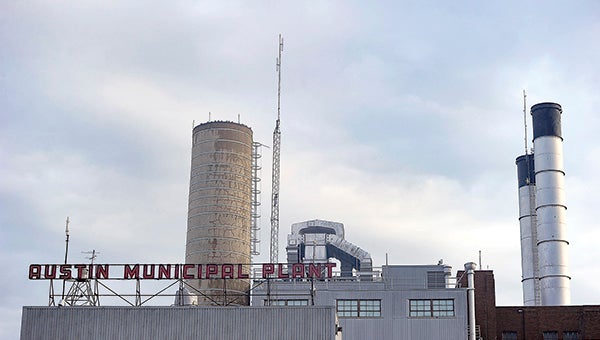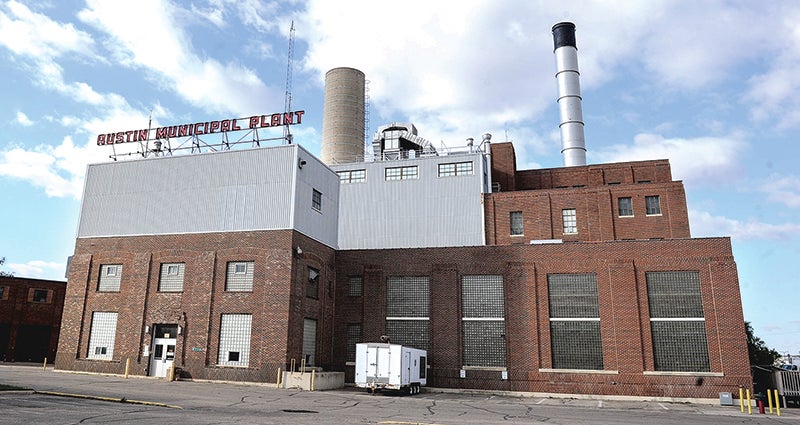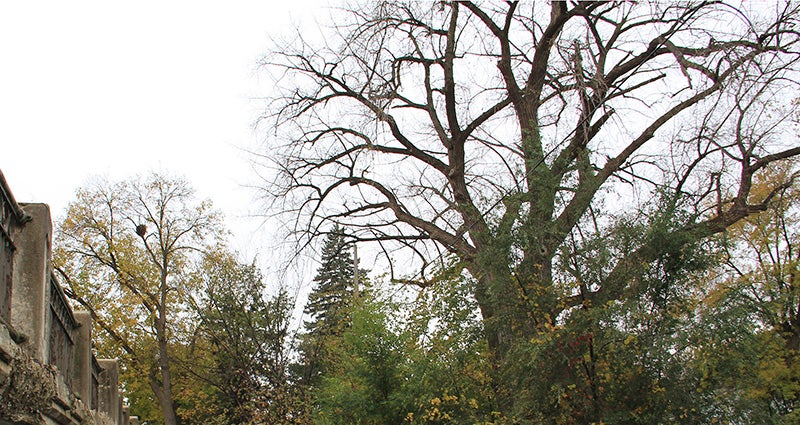As rec center deal nears for downtown plant, some are calling to save the building
Published 7:01 am Sunday, January 17, 2016

The downtown power plant is the ideal location for Vision 2020 for a new Community Recreation Center. Herald file photo
By Jason Schoonover and Jordan Gerard
Vision 2020 is working on a deal to buy the former Austin Utilities Downtown Power Plant to be the future home of a planned community recreation center, but concerned citizens are calling for more conversations before a site is officially selected.
Austin Utilities and Vision 2020’s Community Recreation Center Committee have outlined the terms of a purchase agreement, but the utilities board and the Austin City Council both still need to vote on the sale before work can move forward. Votes are not yet scheduled but could happen as soon as this spring, according to Utilities General Manager Mark Nibaur.
The downtown plant has long been known as the preferred site for the rec center planned by Vision 2020. To Vision 2020 leaders, securing a purchase agreement and the necessary approvals to buy the site as the home of the rec center is a vital stepping stone, as nothing else in the project can move forward until a location is decided.
“I think it’s going to be exciting for the community if this does go through,” said Matt Cano, who co-chairs the Vision 2020 Community Recreation Center Committee with Tanya Medgaarden.
But now that an agreement is near, Quin Brunner and Janet Anderson formed a Facebook group, penned a letter and started a Change.org petition to call for the parties involved to slow down and give the community more time to discuss potential uses for the downtown plant and potential locations for the rec center.
“We should really take the time to make sure the community rec center is built in the best way possible,” said Brunner, who previously served as Vision 2020’s interim coordinator.
Brunner and Anderson are also calling to save the downtown plant, which would be largely taken down — except for possibly the turbine room — for the rec center project, should it move ahead.
Anderson, an Austin City Council member, said she’s never announced how she planned to vote on an issue in the past, but she wanted to be up front and open about something she is passionate about.
“I said I won’t vote in favor of the community rec center as long as it’s tied to the demolition of the power plant,” she said. “I do support a community rec center, just not there.”
Site Plans
The community rec center is perhaps the most anticipated Vision 2020 project and would likely feature an indoor playground, a family aquatic center, community spaces, gyms, a gymnastics facility, workout rooms, a running track and more.
Plans call for the Austin YMCA to operate the facility, possibly with parts being accessible to Y members and parts being community rec center space, though many details are still being worked out.
Step one is securing a site.
The downtown plant is Vision 2020’s top and largely its only choice for the rec center’s future home. Committee members like the site because it’s a centralized, downtown location, which is what was expressed in a community survey at Vision 2020’s start.
“That is our preferred site,” Cano said. “It really gives us a nice centralized location for the downtown for [Austin]. It brings some synergy with the senior center, the two arenas, the library, that Fourth Avenue corridor, the bike trails, the waterways. It really is a nice central location.”
But Anderson and Brunner are hoping the community is still willing and eager to explore other possible uses for the plant.
Before it became Vision 2020’s preferred rec center site, the plant was the center of another Vision 2020 project, also one of the initial 10 goals. One proposal called for converting the space into a blend of apartments and retail space.
But according to Vision 2020 Director Greg Siems, that idea was tabled after three years of feasibility, environmental and housing studies found it “just wasn’t a viable option.”
“These are the economic realities we have to deal with, and we want to be sure we can create something instead of having a liability just sit there,” Siems said. “We respect other people’s opinions and wanting to have a conversation, but based on the evidence that Vision 2020 has seen and parts of the previous studies utilities has done, it’s just not a possibility.”
To Siems, it’s not about historic preservation versus the rec center. Vision 2020 is discussing no other plans now, as leaders believe the plant site is the best option for the rec center and it’s the best option for the utility building.
“We’ve spent a lot of time and money,” Siems said. “There’s only so much time or money that you can invest into planning and research that it’s time to do something.”
However, Anderson and Brunner said they haven’t seen enough information to convince them such redevelopment plans for the downtown site aren’t feasible and potentially lucrative.
However, Brunner and Anderson argued the plant redevelopment committee was disbanded rather suddenly, and they argued the initial ideas for mixed retail and residential space merit more discussion and research.
“It’s a profitable option,” said Brunner, who argued the initial plans were pie in the sky plans and could have been scaled back.
Since ceasing operations in 2009 and being decommissioned from 2011 to 2014, the plant has gained public exposure as the home of the first four Austin ArtWorks Festivals.
The initial downtown plant committee started early work to enter at least parts of the building on the National Register of Historic Places, according to Anderson and Brunner, and funding sources were available for possible restoration and rehabilitation projects.
But the plans were ultimately scrapped.
Once it was selected as the preferred site, rec center committee leaders considered retrofitting the rec center into the original utilities building, but Cano said the plan didn’t make sense because it would require additional staff and security because the layout would span more floors.
”Economically, the numbers just didn’t justify to do that,” Cano said. “It’s a beautiful structure and I wish we could fit it into it, but unfortunately, when we look at it numbers-wise and a business decision of how to operate it, it just wouldn’t work to do that.”
‘Why can’t we do both?’
The Austin City Council and Mayor Tom Stiehm are currently looking to address a workforce housing shortage in Austin, and Stiehm is leading a committee tasked with looking at potential solutions.
To Brunner and Anderson, reigniting talks about the plant being used as a blend of residential and retail space could be one solution. Along with being appealing to millennials, they noted retail possibilities like a microbrewery or other inventive possibilities could serve as another tourist draw to downtown Austin to compliment the new Spam Museum due to open this spring.
Brunner and Anderson would like to see Vision 2020 reform the power plant committee to continue exploring opportunities for the site, while the rec center considers other sites.
“It was a great idea then,” Anderson said of the initial plant renovation plans. “It’s still a great idea. Why can’t we do both?”
Price
But Vision 2020 leaders are excited by the idea of reaching an agreement and moving forward. The cost of the rec center is expected to be about $35 million, though committee members noted construction costs are trending higher.
“That’s why we really want to get going as soon as possible,” Siems said. “We don’t want to wait, especially after all the work’s gone into it.”
Though a substantial part of the funding is already secured, Vision 2020 would plan a public campaign to fundraise for a portion of the project.
However, many questions revolve around operating costs for the facility.
Vision 2020 is likely to ask the city for annual contributions to operating costs. Anderson said Vision 2020 is asking for $200,000 a year for 30 years, but Cano said they’re still in discussion and no cost has been agreed upon.
To Anderson, that raises significant questions, especially when taxpayers’ money is likely to be involved.
“To me, it makes the most sense for the city council to find out how and where $200,000 a year are going to come from before it’s even appropriate to look at a lease,” Anderson said.
One option Anderson discussed is a local option sales tax. The city could consider funding rec center operations through such a tax once the its local option sales tax for flood mitigation ends. The city would have to petition the state Legislature to approve it for a vote and then voters would also need to approve it.
“We think [this] is a really good potential solution because it spreads it out,” Anderson said. “The voters have to approve it, so then you’d have that community support for local option sales tax.”
Brunner and Anderson would also like more discussion, along with pros and cons, surrounding other potential rec center sites.
An area on and around the Austin Post Office block was another site considered at one point, and Brunner added it may offer more room for the rec center and room for future expansion, while still being essentially in downtown.
However, Vision 2020 is focused on the power plant. Cano noted they did look at other sites, like the Austin Post Office area, but it required acquisition of houses and businesses and he nor other project backers favored displacing any homes or businesses and added it’s “not where we want to build.”
However, Anderson and Brunner said it’s at least worth discussing a rec center at the post office site and a revitalized plant building, which both could expand the footprint of downtown.
Closure or more discussion?
With agreement in sight, rec center committee members are excited for the project location to be final.
“We’ve been working at this for a number of years with our committee who’s all full of very dedicated, hardworking people who have spent a lot of time on the project, so it’s exciting that we’re getting to that point,” Medgaarden said.
When the location is decided and all sales go through, construction would possibly start after the utilities moves to its new facility and could take about 18 months to complete.
“I think this is a tremendous opportunity for the city and the utilities,” Cano said.
However, Anderson and Brunner are asking for more community input, and they asked for Vision 2020 to re-establish the original power plant committee to bring together representatives from groups like the city, the Austin Area Chamber of Commerce, Vision 2020 Steering Committee and former power plant committee members.
“It was a huge commitment to do this much work,” Anderson said. “It’s critical that that committee be re-established and endorsed.”
Brunner said Vision 2020 only sees a vocal minority of the community opposed to tearing down the building.
“I guess Janet and I see it differently, just from our interactions with the community members,” Brunner said. “I think having this out there before the vote is going to give the folks on the Vision 2020 committee and the city council really valuable input as to what the right decision is to make.”
Anderson and Brunner hope their efforts show “it’s more than a minority who cares about the plant.”
“We’re saying people need to know the power plant is at risk. Tell us what you think,” Anderson said. “The intent is really to say to the Vision 2020 Steering Committee and Hormel Foundation leadership that people really care and this is worth seriously evaluating and putting a solid committee together that has the ability and expertise to explore the right avenues for reuse.”
“We need to be raising awareness now,” Brunner said.
However, one key goal is to simply get people on both sides of the argument to voice their opinion.
Despite disagreeing, Brunner and Anderson, along with Vision 2020 leadership, voiced respect for those with opposing views, and all involved in the discussions acknowledged none of the plans can succeed without community cooperation and support.
More inside and online
See Quin Brunner and Janet Anderson’s letter here.
For more, visit these links:
• www.change.org/p/austin-city-council-save-the-austin-municipal-power-plant




